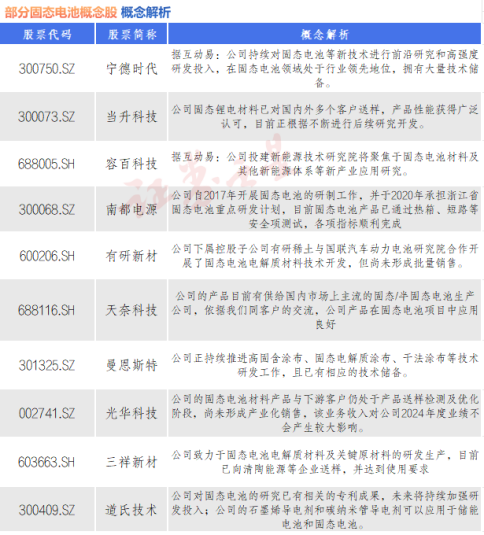Humanoid Robots and Solid-State Batteries (Including Concept Stocks)
![]() 02/07 2025
02/07 2025
![]() 616
616
As a pivotal branch of artificial intelligence, humanoid robots have witnessed significant technological advancements in recent years, gradually permeating various facets of our lives. From industrial production to household services, and from medical care to education and entertainment, the potential applications of humanoid robots are vast. However, to ensure efficient, safe, and long-lasting operation, the selection of battery technology, their power source, is paramount.
Investors, after rigorous market exploration, likely have some understanding of concept stocks related to PEEK material suppliers and various humanoid robot component manufacturers. Nevertheless, batteries, an indispensable component often overlooked in some humanoid robot concept stocks, play a crucial role.
Currently, the mainstream batteries in the new energy vehicle industry chain are primarily lithium batteries. While these batteries offer advantages such as high energy density and light weight, they also have certain drawbacks. For instance, lithium batteries can overheat, burn, or even explode under extreme conditions. Additionally, overcharging can lead to permanent fixation of lithium ions in the lattice, reducing battery life.
Solid-state batteries, a technology undergoing rapid iteration similar to humanoid robots, have emerged as one of the most suitable options for humanoid robots.
From a performance standpoint, solid-state batteries offer higher energy density, providing humanoid robots with more enduring power. Humanoid robots require substantial electrical energy to drive their complex mechanical structures and electronic systems. While traditional lithium-ion batteries have improved in energy density, they still have limitations. Solid-state batteries replace the liquid electrolyte in traditional lithium-ion batteries with a solid electrolyte, leading to higher space utilization and an energy density that can reach 2 to 3 times that of traditional lithium-ion batteries.
Furthermore, solid-state batteries offer enhanced safety, ensuring the stable operation of humanoid robots and user safety. Humanoid robots may encounter various complex environments and emergencies, such as collisions, falls, and high temperatures. In these situations, traditional lithium-ion batteries pose certain safety risks. For example, mechanical impact or overheating can cause the liquid electrolyte to leak, leading to internal short circuits and potentially triggering fires or explosions. Due to the use of a solid electrolyte, solid-state batteries have a more stable internal structure, making them less prone to leakage and short circuits even under external force impact or high temperature environments. This provides a robust guarantee for the stable operation of humanoid robots in diverse complex environments.
The application of solid-state batteries to humanoid robots is not unsubstantiated. On investor interaction platforms, some investors have inquired about which battery technologies Nandu Power can apply to robots (dogs). The company responded that suitable scenarios currently include low-altitude aircraft, robots, among others.

Coincidentally, at the end of 2024, GAC Group proudly unveiled its self-developed third-generation embodied intelligent humanoid robot, GoMate. Thanks to the integration of all-solid-state batteries, GoMate boasts an endurance of 6 hours and significantly reduced energy consumption, achieving over 80% energy savings compared to similar products. This underscores the relatively obvious advantages of solid-state batteries in the field of humanoid robots. Here, the author has compiled a list of solid-state battery concept stocks and their overviews for investors' reference.

- End -








